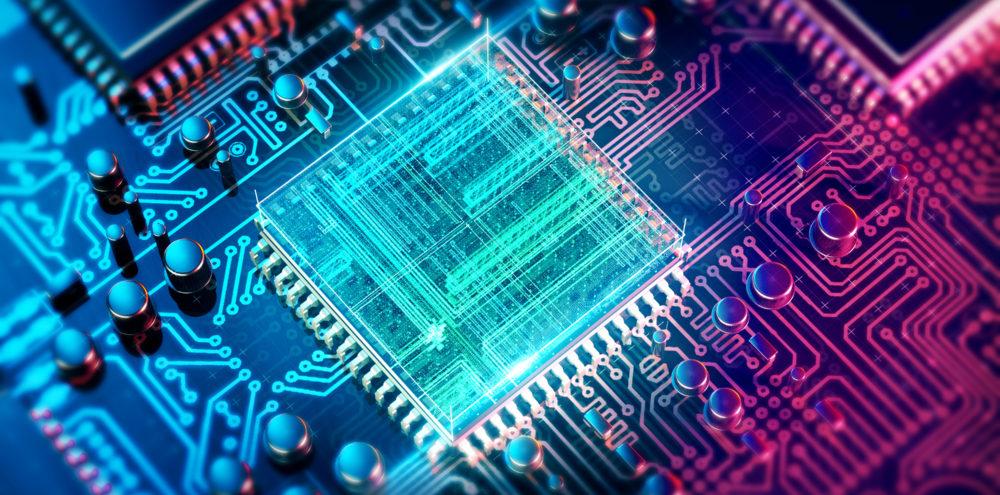The ARM is a kind of RISC (reduced instruction set computing) architecture by ARM Holdings. It is designed for server processors, but contrary to some other companies like Intel and AMD, ARM does not produce processors. Their solution is to create ARM SoC (System on a Chip) and hand production over to low-cost manufacturers. The manufacturers receive a license for the core created and then can adjust the chip as they wish.
The chips designed by ARM have various applications, including some popular mobile phones and wider solutions like gateways or networks. Development is ongoing, and the CPUs are evolving into different areas: specifically, data centers and the Internet of Things (IoT).

Some things went wrong along the way
Some time ago, an idea emerged about using low-power chips designed by ARM and Intel for some low-power servers. The idea was to use them with some limited simple set of actions: these could be, for example, printing or serving HTML pages.
HPE (Hewlett Packard Enterprise) was trying to use ARM processors for one of their servers back in 2011. The project was called Moonshot. The servers were supposed to be for a specific usage only. But, it was also claimed that they helped save energy and were customizable. An ARM processor by Calxeda was suggested. However, in order for the processor to be successful, quite a few options needed to be added. In the smartphone ARM SoC, a streamlined design was used that lacked error correction, scalability, and reliability. Also, in order to launch it, the processor needed ports for software and dev tools to be built.
Unfortunately, the project with these processors did not work. The most likely reason for this failure was the decision to use 32-bit memory on the processor: this seems like an insufficient solution for a server. A maximum of 4GB of memory can be available within a 32-bit chip. And the servers required a 64-bit chip instead for a better performance.
Calxeda was hoping to kick things off with a smaller memory version and move on to a 64-bit one later. But the production took so much time and money, that by the time it was ready,
no-one was interested in it. Nevertheless, the development wasn’t completely in vain. The solution was purchased by a company called Silver Lining Systems. The company specializes in obtaining bankrupts, and as they are connected with AtGames, an online gaming business, AtGames was able to make use of the chip.
ARM processors – further applications
The market continued to develop in a broader direction. ARM decided to target any possible future computer. This includes any piece of technology that it is possible to program and set up interaction with. For example, interactive screens in museums or official institutions, smart TVs, and in-house tools. This kind of application is mainly connected to the IoT. And ARM SoC is extremely comfortable in that market.
The idea is to apply ARM solutions to the smallest possible units. Any device containing some kind of sensor and engaged in data collection is a target. Microcontrollers using the ARM architecture are the best on the market at present.
As for server development, it was decided to rather go for specific use servers. The main target is processors dealing with some simple repetitive tasks. Anything dealing with data analysis, database access, streaming, etc. Nowadays ARM processors also contain software. It’s possible to use essential dev tools and some languages. Java is also present on the processor. Linux has already had its way, and now Microsoft is trying out a Windows Server port.
Another target for ARM SoC is supercomputers. The Japanese company Fujitsu is currently in the process of creating a new supercomputer with ARM processors. The initial launch was planned for 2020, but this has been slipped to 2022 due to complications with the development. The developers are struggling with designing the processors: the chip needs additional adjustments to be powerful enough and have the features required for a supercomputer.
Another possible application for the technology is IoT. Yet, the implementations on IoT are so broad, it may take a while for the ARM to pick up there. The main problem is that CPU providers are mostly not geared up for producing embedded devices of various kinds. A lot of data analysis, research, and testing will be required in order to cover a significant part of this market.
Companies dealing with ARM technologies
There are two main players in the field: Cavium and Qualcomm. Both companies are compatible and have great server solutions in their product line. Cavium has some experience in creating their own stuff. As they launched into the ARM market a few years later than Calxeda, they had an opportunity to learn from previous experiences. The corporation was able to target Linux workloads, various services, and Java. There were no major issues switching from x86, as Java does not depend on architecture.
Qualcomm, however, is concentrating on the general-purpose market. They believe that ARM SoC can be used in any direction. But, the bottleneck of this solution is that it needs a lot of research to be performed before they start. In addition, new software is required to run the architecture, which is a significant consideration.
Hackenberg states that ARM will get its share of data centers. On the other hand, he is not convinced that ARM solutions (read: The ARM processors: A, R, and M categories and their specifics) will be able to move x86 out of the market any time soon.
Conclusion
The ARM SoC has come a long way, but there’s still much to do. The fields of technology applications are growing, as is the architecture. New solutions are constantly being found for improving current products and creating new ones. The ARM might as well be a good part of future data centers as well as IoT. If you are looking for someone to get into the ARM architecture, Sirin Software is here for you. Our team of skilled professionals is ready to answer your questions and assist in any way we can.





